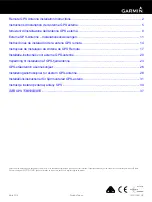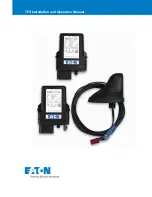
Important Information Regarding Surge Protection
The following illustration is a visual representation of where there is a risk of hazardous voltage surges in
the cable route (from antenna to Meinberg system). The examples below explain how you can protect your
Meinberg system from these.
MBG S-PRO
Clear view of the sky!
LANTIME
MBG S-PRO
Optional
Second surge protector in line
Recommended
First surge protector in line
Case Example 4
M300
Case Example 2
PE busbar
Case Example 3
GPS Multiband
Antenna
Case Example 1
Case Example 1:
An indirect lightning strike near the antenna or coaxial cable may induce transient voltages ("spikes" or "surges").
These spikes can be carried via the coaxial cable to the inside of the building and consequently to the system’s
receiver. It is therefore strongly recommended to have the surge protector installed at the point directly after
the cable enters the building.
Case Example 2:
In the event of a direct lightning strike on the antenna, the resultant transient voltage may be discharged via
the PE busbar (Multi GNSS L1 antenna only). This prevents the transient voltage from being carried to the
coaxial cable and subsequently to the system’s receiver.
Case Example 3:
If the length of the coaxial cable between the antenna and point of entry into the building is rather long (e.g.,
10 meters), there is a greater risk of transient voltages being introduced into the antenna cable as a result of
lightning strike. So the installation of a surge protector immediately after the point of entry into the building
is also strongly recommended here.
Case Example 4:
If the cable leading from the point of entry into the building to the Meinberg system is laid together with
other cables (for example in a cable duct alongside high-voltage cables), transient voltages may "leak" into the
antenna cable, causing damage to your system. To prevent this, a second surge protector can optionally be
installed in the line just before the device.
6
Date: May 11, 2022
GNSS MULTI BAND Antenna






































